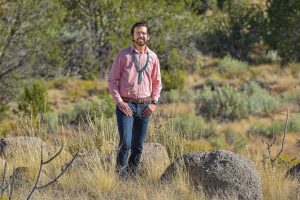Department of Energy Office of Electricity (DOE OE) has published a series of reports supporting their Long Duration Storage Shot, which aims to develop specific and quantifiable RD&D pathways to reduce the cost of grid-scale energy storage by 90% for systems that deliver 10+ hours of duration by 2030. DOE recently published eleven technical reports summarizing and analyzing explore the promising RD&D pathways to substantially lower the costs of long-duration energy storage.
Long-Duration Energy Storage: The Time Is Now
How can US states with aggressive decarbonization goals coupled with federal decarbonization goals have energy when they need it? Long-duration energy storage (LDES) is a likely candidate. LDES systems are large energy storage installations that can store renewable energy until needed and can provide a much-needed solution for a reliable and decarbonized grid. But planning needs to start now, according to new research from Pacific Northwest National Laboratory (PNNL).
Energy Department Selects Six National Laboratories to Validate Battery Energy Storage Performance
The U.S. Department of Energy’s (DOE’s) Office of Electricity (OE) announced a team of six DOE national laboratories to receive a total of $2 million to carry out the Rapid Operational Validation Initiative (ROVI). ROVI will validate the testing of new energy storage systems.
DOE Announces Energy Storage Innovations Prize Winners
The U.S. Department of Energy’s (DOE) Office of Electricity (OE) today announced the ten winners of the inaugural American-Made Energy Storage Innovations Prize. The American-Made Challenge calls for solutions to grid-scale energy storage, focusing on nascent and emerging technologies that disrupt or advance current state-of-the-art energy storage research areas. As part of DOE’s Storage Innovations 2030 Initiative, this prize is helping industry develop new technologies that have greatest potential to meet grid reliability, equity, and decarbonization goals.
U.S. Department of Energy Opportunity: Rapid Operational Validation Initiative for Flow Batteries
The U.S. Department of Energy (DOE) is issuing a lab call to develop the Rapid Operational Validation Initiative (ROVI), which will address critical gaps in data needs to evaluate energy storage, such as the lack of access to large and uniform sets of performance data that are necessary to accelerate the pace at which technology development can occur.
Energy Storage Module Added to Lab Partnering Service Online Portal
Managed by the U.S. Department of Energy’s Office of Technology Transitions, the Lab Partnering Service (LPS) offers access to the world’s most advanced scientific facilities and researchers across the Department’s national lab complex. LPS provides investors—and other parties looking to advance energy innovation—a single online platform to connect with leading DOE national laboratory technical experts to quickly answer innovation questions, as well as discover opportunities for building partnerships and taking research or product advancements to the next level.
R&D 100 Winner 2022: Iron Nitride Soft Magnetics
Iron nitride (Fe4N), a new soft magnetic material, is a high-magnetization and high-resistivity soft magnetic alloy. Fe4N soft magnetic components can reduce next-generation smart grid power electronics system size and weight by up to an order of magnitude over existing state-of-the-art soft magnetic materials, while also realizing increases in efficiency. The revolutionary performance advantages of Fe4N soft magnetics are expected to spur key innovations in utility-scale and transportation-based power electronics hardware and to increase the accessibility and use of distributed energy resources such as grid energy storage and carbon-free mobility. This leading-edge material is the world’s first commercially available iron nitride soft magnetic component, and it is ready for manufacturing now.
- Developer: Sandia National Laboratories
- Co-Developer: University of California, Irvine, United States
Read more about Sandia’s five R&D 100 awards winners and a silver specialty award.
American Indian Science and Engineering Society recognizes early-career Sandia engineer

Dr. Stan Atcitty, who leads the DOE Energy Storage Power Electronics subprogram at Sandia National Laboratories, mentors and coaches many American Indian students and young professionals. One of which is, Dylan Moriarty, a member of the Navajo Tribe. Dylan has been named the 2019 Most Promising Engineer or Scientist by the American Indian Science and Engineering Society (AISES) on October 13, 2019. This prestigious award is given to American Indian professionals with less than five years of work experience since his or last degree. Dylan is a geoscience engineer at Sandia who specializes in spatial statistics and data analytics.
Sandia National Laboratories’ Dr. Leo Small recognized by Royal Society of Chemistry
Dr. Leo Small of Sandia National Laboratories was recognized by the editors of the Royal Society of Chemistry (RSC) as an

Outstanding Reviewer on the RSC Advances reviewer panel. Responsible for peer reviews of @20 papers in 2018, this is an important recognition of Dr. Small’s technical visibility and respect in the scientific community. His valuation as a peer reviewer for an abundance of articles shows that he is recognized for his excellence as a reviewer and is a strong commendation and acknowledgement for him as a technical leader. Formed in 1980, the RSC is a professional association in the United Kingdom dedicated to the goal of the general advancement of chemical science and its applications.
2019 EPA Green Chemistry Challenge Winners

Prof. Sanjoy Banerjee of City College of New York and City University of New York Energy Institute, Sandia National Laboratories, Urban Electric Power, Inc., Brookhaven National Laboratory, and the Department of Energy Office of Electricity, Energy Storage Research Program won the 2019 US Environmental Protection Agency Green Chemistry Challenge Award in the Academic category. The team was recognized for creating large-scale zinc-manganese oxide batteries that can be recharged thousands of times without the typical decrease in the length of the battery’s life-time. These batteries do not have some of the limitations of lithium-ion and lead-acid batteries, and they use materials that are abundant and common in existing supply chains. Sandians Tim Lambert, Mathew Lim, Igor Kolesnichenko, and Babu Chalamala, along with Prof. Igor Vasiliev from New Mexico State University were also involved in this research project.
